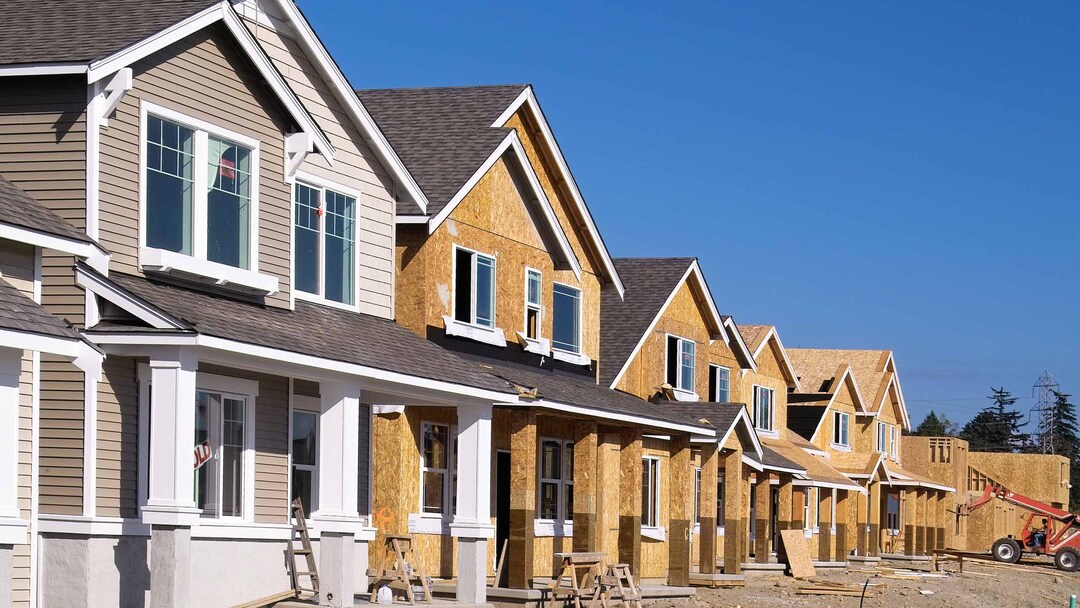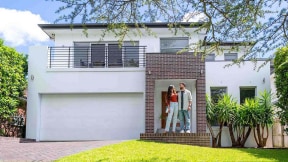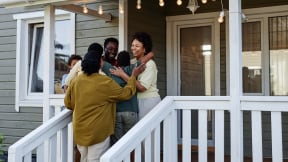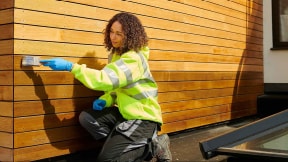LEED certification: Requirements, cost, pros and cons, and more

If you’re a homeowner who’s interested in building a green home and living sustainably, you’ve probably come across mentions of LEED certification. LEED is an acronym for “leadership in energy and environmental design,” and the rating system used for certification assesses the sustainability and environmental impact of a building. Whether you’re already dedicated to green architecture or just exploring eco-friendly construction, understanding LEED certification may help you make informed, sustainable choices for your home.
LEED certification, explained
The LEED rating system was developed by the U.S. Green Building Council (USGBC), a nonprofit that was formed in 1993 with the goal of promoting greener design, building and operation practices. Its first iteration, which is now known by USGBC as LEED v1.0, came in 1998. Since then, the USGBC has built on that pilot program’s success, consistently updating the certification requirements to reflect the changing landscape of sustainable, energy-efficient practices and technologies.
The USGBC uses a points-based system to evaluate a building, with a maximum award of 110 points. There are four levels of certification, and a building must have at least 40 points to be granted certification.
LEED certification levels
Before you’re permitted to apply for certification, your project will need to meet certain requirements pertaining to its scope, construction methods, materials, design and location (among others).
LEED certification requirements
Any type of building can be LEED certified, but the requirements may differ depending on the project type. The five main categories of projects are as follows:
- Building design and construction (BD): This designation applies to both new constructions and renovations of commercial, institutional and high-rise residential buildings.
- Interior design and construction (ID+C): If you’re building out an interior in a commercial, retail or hospitality-oriented space, your efforts could be eligible for LEED certification under the ID+C designation.
- Operations and maintenance (O+M): This project category focuses on operating and maintaining existing buildings in a sustainable way.
- Neighborhood development (ND): LEED certification doesn’t just apply to single buildings and their interiors. Entire neighborhoods and communities are projects that may be LEED certified.
- Homes: LEED for homes focuses on residential building projects, both single-family and multi-family.
While each of these project types may have a bit of variation, each one must meet the following three minimum project requirements:
- Must be in a permanent location on existing land: Your project must be a permanent space or structure that serves a specific function. As certification is focused on long-term sustainability, temporary structures or spaces aren’t eligible.
- Must use reasonable LEED boundaries: LEED certification requires accurate boundaries that account for all related land and structures. This allows for proper assessment of the project’s sustainability and environmental impact, while dissuading anyone from excluding anything to gain or retain certification points.
- Must comply with project size requirements: Each type of project is required to comply with designated size requirements. In the case of residential projects, the building will have to be legally designated as a dwelling unit. This means that each applicable living space must include a cooking area and a bathroom.
If your project meets these minimum requirements, you are eligible to begin the certification process.
How to get your home LEED certified
The LEED certification process involves four key steps:
- Registration: This is when you register the project with the USGBC. This is typically done online, through the LEED platform. It’s during this stage that you’ll have to select the ratings system that aligns with your project type.
- Application: After registering your project, you’ll want to gather any documentation that shows compliance with the prerequisites and credits that are applicable to your project’s LEED rating system. These documents may include a list of materials, the project’s specifications, plans and any other relevant materials. The application and documents may be submitted through the LEED online platform.
- Review: Once they’ve been submitted, the USGBC will carefully review your application and documentation to confirm the project meets the outlined criteria regarding sustainability.
- Certification: If the project is found to comply with the criteria, your project will receive certification at a level determined by the project’s prerequisites and credits, which each have a point value.
LEED certification levels
Depending on your project’s awarded points, it may be designated as certified, silver, gold or platinum. The point range is as follows:
- Certified: 40-49 points
- Silver: 50-59 points
- Gold: 60-79 points
- Platinum: 80+ points
How much does LEED certification cost?
The cost of LEED certification varies depending on the type of the project, its size, scope, the corresponding rating system and the level of certification you’re shooting for. That said, you’ll likely want to account for registration, certification and professional fees, as well as any third-party review costs.
Pros and cons of LEED-certified homes
While sustainable, environmentally conscious design, construction and operation are noble goals, there are some considerations to keep in mind if you’re looking to have your home LEED certified.
Pros
- Improved energy efficiency (and potential cost savings): Making energy efficiency a priority for your project could lead to lower utility bills in the long run.
- Government incentives and tax rebates: Depending on the project and your location, your local government may offer incentives and tax rebates for LEED-certified homes.
- Increased home value: The sustainable design of LEED-certified homes may make them more desirable to buyers who make eco-friendly living a priority.
- Improved rental prospects: Environmentally conscious renters may be more likely to sign a lease if the home is LEED certified.
Cons
- Upfront costs: Between registration, certification, construction and design costs, the expenses associated with LEED certification can potentially add up.
- Variation and complexity: The LEED certification process may vary depending on your location, adding to what already has the potential to be a complex, multi-step endeavor. Planning, documenting and coordinating may go more smoothly with the help of a professional.
- Rapidly changing technology: As new technologies and sustainability standards emerge, some may dull the eco-friendly edge of a LEED-certified project. As a result, it may not be as competitive compared to newer buildings and it may be costly to bring up to date.
In summary
The creation of LEED certification happened in the spirit of transforming how we build, design and operate the structures where we spend our lives by emphasizing responsible, sustainable and environmentally conscious practices. For homeowners who want a greener place to rest their heads, the LEED certification process may provide a valuable framework that could help you feel better about your house and your environmental impact.
LEED Certification FAQs
1. Does LEED certification increase property value?
Depending on the type of property and the level at which it's certified, LEED certification could potentially increase property value. Being certified may appeal to environmentally conscious buyers and renters, as could the potential savings on energy bills that come with an efficient property.
2. How long does it take to get a LEED certification for your home?
The timeline of the LEED certification process tends to vary depending on type of project, the level of certification you’re seeking and the pace of construction, design or renovation. Realistically, it could take anywhere from a few months to a few years.
3. Can you apply for a LEED certification at any time of the year?
Yes, you may apply for a LEED certification at any time of the year. Building responsibly is always in season.
4. Does LEED certification expire?
While LEED certification doesn’t come with an expiration date, the USGBC updates the system semi-regularly. To obtain your desired rating and remain competitive as a seller, it helps to make sure you’re up to date with the latest version of the LEED rating system.



